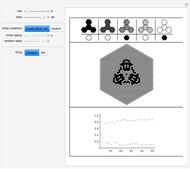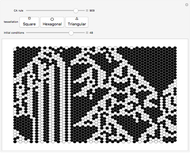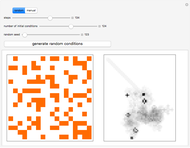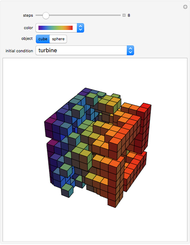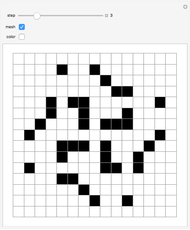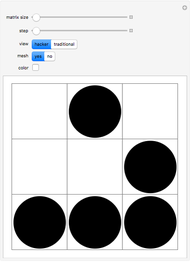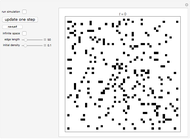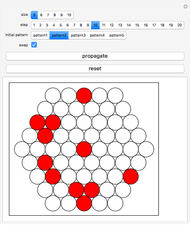Hex Life: Hexagonal Cellular Automata

Requires a Wolfram Notebook System
Interact on desktop, mobile and cloud with the free Wolfram Player or other Wolfram Language products.
Hex Life is based on Conway's classic game of life, but instead of having cells with only four neighbors, each cell can have up to 12 neighbors (six first-tier neighbors and six second-tier neighbors). A cell dies, is born, or stays alive or dead depending on the number of its neighbors that are alive. Click on an "initial pattern" button to choose any initial pattern. To view the process, click the various step buttons or the "propagate" button. The "size" buttons control the size of the grid. The "reset" button returns the cells to their original state at step 1. The "swap" checkbox makes the hexagon periodic.
Contributed by: Katherine Wu (July 2012)
Open content licensed under CC BY-NC-SA
Snapshots
Details
Snapshot 1: the state from initial pattern 2 with the swap option selected
Snapshot 2: the state from initial pattern 2 with the swap option deselected
Snapshot 3: the state of a size 10 hexagon from initial pattern 2 with the swap option selected
The program is based on this Java applet: http://www.well.com/~dgb/hexlife.html.
Permanent Citation
"Hex Life: Hexagonal Cellular Automata"
http://demonstrations.wolfram.com/HexLifeHexagonalCellularAutomata/
Wolfram Demonstrations Project
Published: July 3 2012






